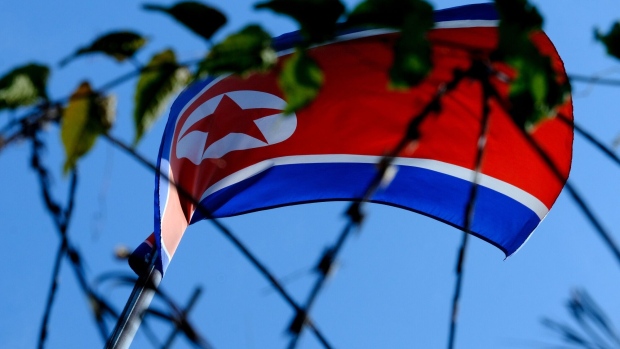Mar 26, 2023
North Korea Fires Ballistic Missile to Pile More Pressure on US
, Bloomberg News

(Bloomberg) -- North Korea test-launched two short-range ballistic missiles, adding to its barrage in recent weeks as Pyongyang protests joint military exercises by the US and South Korea.
The missiles were fired starting about 7:47 a.m. local time from the Chunghwa area just south of Pyongyang, South Korea’s Joint Chiefs of Staff said in a text message. The missiles were launched about 10 minutes apart and flew about 350 kms (220 miles) and reached a maximum altitude of about 50 kms before landing outside of Japan’s exclusive economic zone, the Defense Ministry in Tokyo said.
Kim Jong Un’s regime has not commented on the latest launch, but its propaganda apparatus has been trumpeting recent tests of weapons it says will “strike fear into the enemies.” North Korea has been seeking new ways to deliver nuclear attacks on the US and its two most important allies in Asia, South Korea and Japan.
Last week, it tested what it billed as a new underwater drone that can create a “radioactive tsunami.” It has also rolled out new missiles to hit US forces in South Korea and this month conducted its first test of a mock nuclear warhead affixed to a missile that could hit western parts of Japan.
The US and South Korea last week began their largest amphibious exercise in about five years in a training drill called Ssangyong. The US Navy’s Nimitz aircraft carrier group is due to arrive in the South Korean port of Busan on Tuesday, military officials in Seoul said. The exercises and American military presence are certain to anger Pyongyang, which has already ramped up its provocations to new levels.
“The timing of the latest missile launches appears to be in protest of US-South Korean military drills and the arrival of the USS Nimitz and we can expect more to come because the regime has a technological and political reason to do so,” said Duyeon Kim, an adjunct senior fellow in Seoul at the Center for a New American Security.
She added that continued testing helps Pyongyang advance its technology, strengthens its nuclear weapons capability and increases its leverage if there is a resumption in now-stalled talks with the US.
Some defense stocks in South Korea and Japan, such as LIG Nex1 Co. and Hanwha Aerospace Co. opened higher on Monday. Share expected to benefit from improved inter-Korean ties dropped, underperforming the broader benchmark.
Over the weekend, North Korea’s external propaganda outlet Uriminzokkiri criticized the joint military exercises as being of an “offensive, not defensive, nature” and saying the situation on the peninsula “is bound to become more explosive.”
North Korea, which had fired 13 ballistic missiles from Feb. 18 to just before the latest launch, has for years called joint drills a prelude to an invasion and nuclear war. The US and South Korea in January announced plans to step up the scale of their joint military exercises. Japan, which North Korea regards as mortal enemy, has also joined some of the drills in recent months.
Kim Jong Un’s regime on March 16 fired what it said was a Hwasong-17 intercontinental ballistic missile hours before South Korean President Yoon Suk Yeol went to Japan for a summit to repair ties and improve security cooperation with their mutual US ally.
The barrage over the past several weeks has included two ICBMs able to hit the American mainland and what appeared to be a new close-range ballistic missile designed to hit US bases in South Korea. The tests also included two cruise missiles fired from a submarine, which appeared to be another first.
Kim Yo Jong, the influential sister of the leader, has warned Pyongyang would turn the Pacific into a “firing range” if the US continued drills. She also hinted the state could start testing whether its warhead designs can withstand the heat of reentering the atmosphere.
North Korea has demonstrated its missiles could fly as far as the US but there are questions as to whether the warheads would be able to stay intact to reach their targets.
The US and South Korea pledged to step up their exercises at a meeting of their defense ministers in Seoul in late January. The drills had been scaled down or halted under former President Donald Trump, who was hoping the move would facilitate his nuclear negotiations with the North Korean leader.
Those talks produced no concrete steps to wind down Pyongyang’s nuclear program, which has only grown larger as disarmament talks sputtered. In recent months, Japan has joined in some of the drills that have included the US and South Korea, a move that angered Pyongyang, which has responded with shows of force to signal its displeasure.
--With assistance from Ryotaro Nakamaru and Youkyung Lee.
(Updates with US aircraft group and comments from analyst.)
©2023 Bloomberg L.P.







